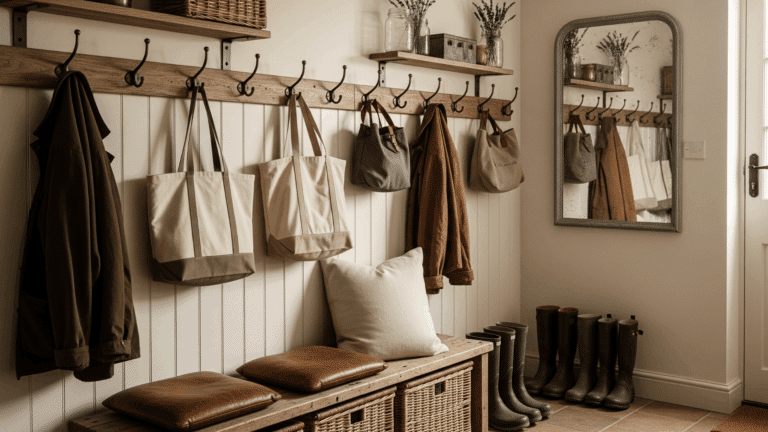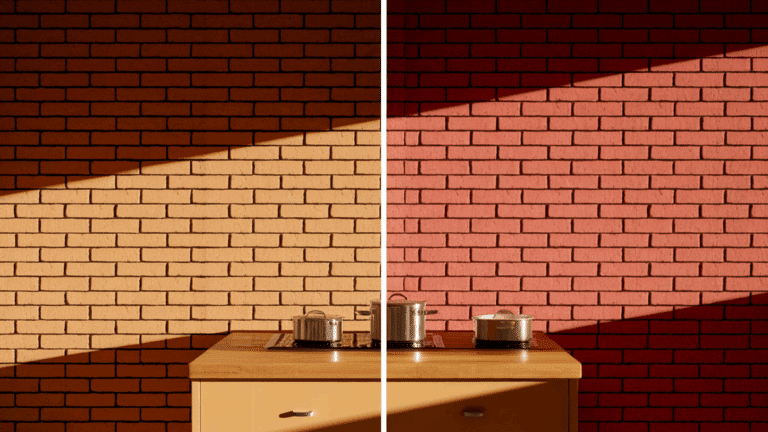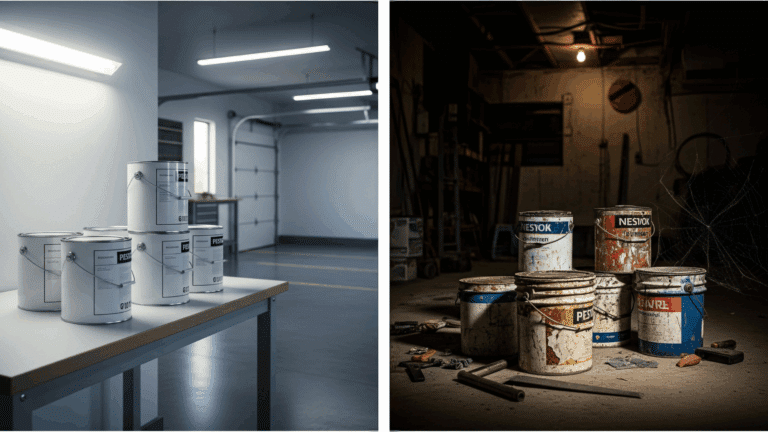How to Clean Painted Cabinets: Easy Steps for a Shiny Finish

Have you ever noticed how quickly your painted cabinets can lose their shine?
It is easy for dust, grease, and fingerprints to build up, making them look dull.
But don’t worry, with a little care and the right cleaning routine, you can bring back their fresh, vibrant look.
Keeping your painted cabinets clean doesn’t have to be a tough job; no matter you are cleaning kitchen cabinets or bathroom vanities, the right techniques will help you keep them looking like new.
We will walk you through the simple steps to keep your cabinets spotless and shining without causing damage to the paint.
Gather Your Supplies
To clean your painted cabinets, you’ll need a few basic tools and materials:
| Tools | Materials |
|---|---|
| Soft Cloth or Microfiber Cloth | Mild Soap or Dish Soap |
| Sponge (Optional) | Warm Water with a Bucket Bowl |
| Towel | Wood or Furniture Polish (Optional) |
Preparation Before Cleaning
Before you begin cleaning your cabinets, it’s important to properly prepare the surfaces and surrounding areas.
Start by removing any dust and debris with a soft, dry cloth or microfiber duster, making sure to reach corners and edges where buildup often collects.
For spots with dirt or grime, use a soft brush or a small vacuum with a brush attachment to gently remove it.
Next, protect your floors and countertops by laying down a towel or plastic sheet to prevent water or cleaner spills.
Finally, cover cabinet handles and knobs with painter’s tape or plastic to keep them dry during the cleaning process.
Cleaning the Cabinets: A Step-by-Step Guide
Follow these easy steps to clean your painted cabinets gently:
Step 1: Mix Your Cleaning Solution
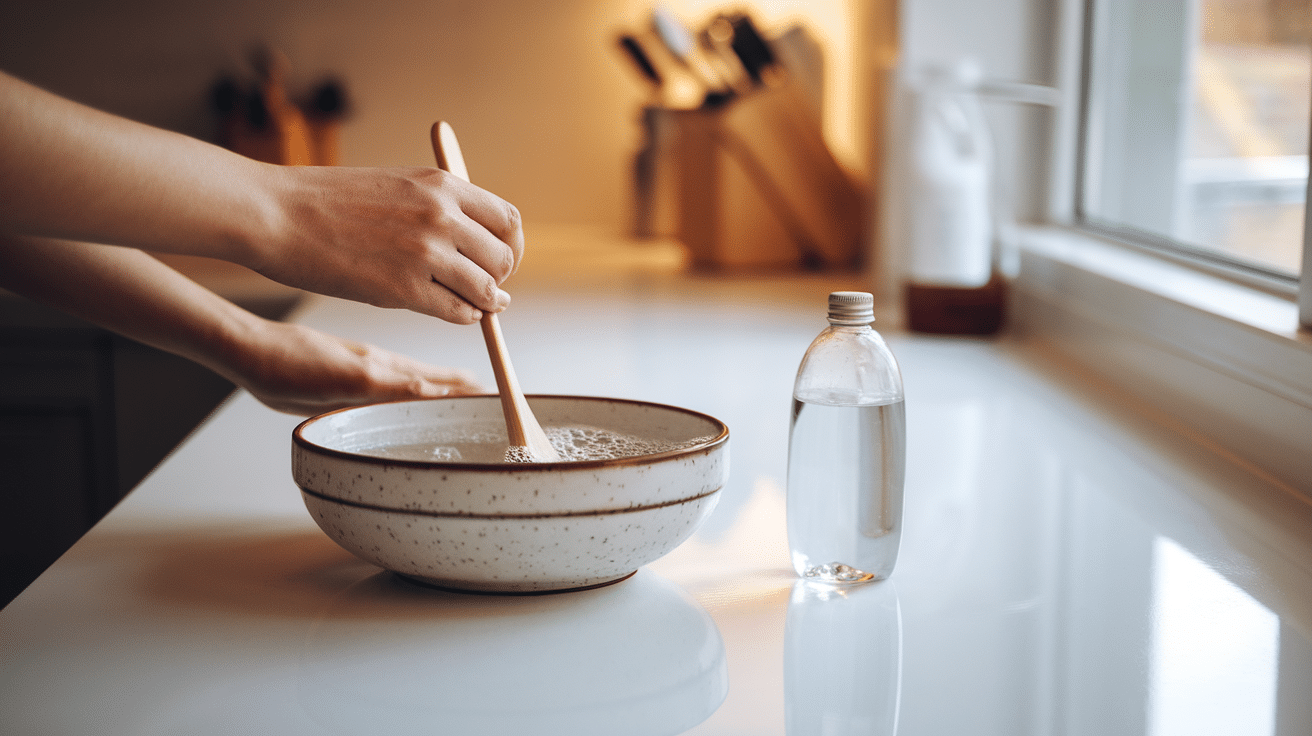
Start by filling a bucket or bowl with warm water.
Add a small amount of mild dish soap or another gentle cleaner, just enough to create a light soapy solution.
Stir the mixture gently, so it bubbles up without making it too soapy. This will help lift any dirt without being harsh on the paint.
Step 2: Dampen the Cloth
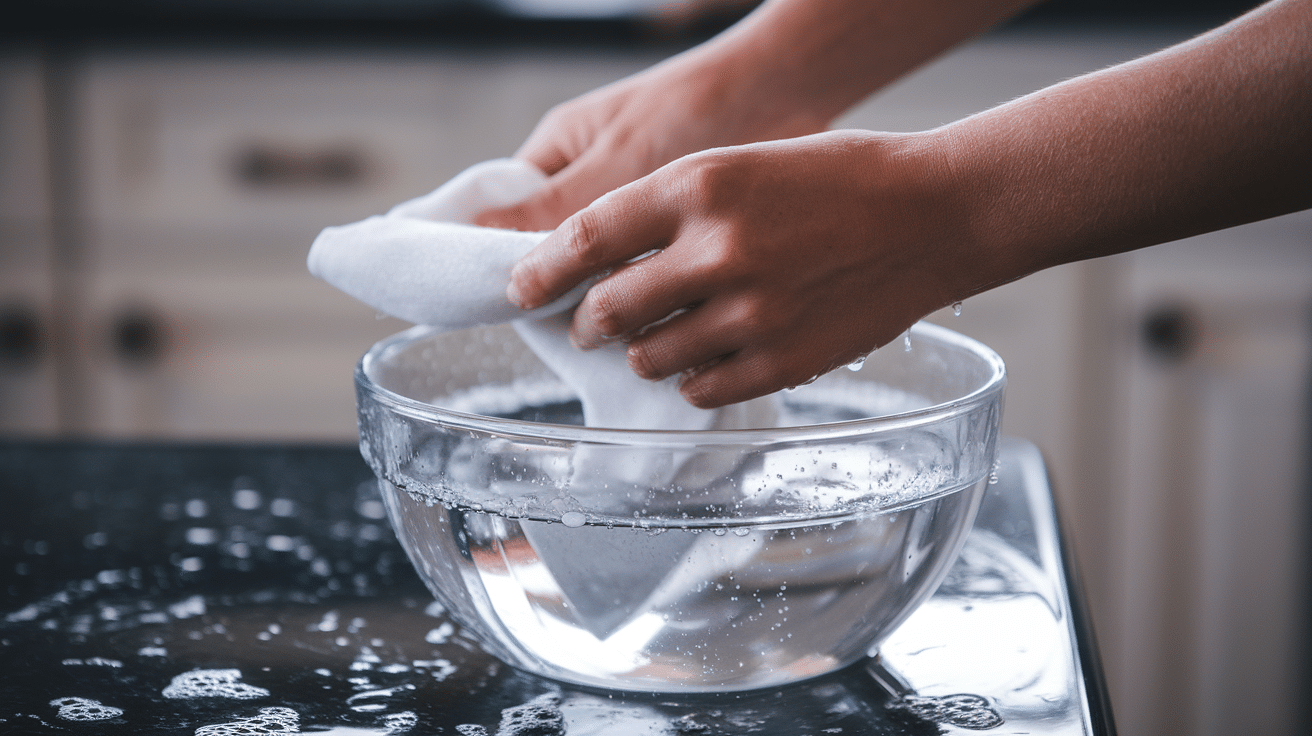
Take your soft cloth or microfiber cloth and dip it into the soapy water.
Gently wring out the cloth until it is damp but not soaking wet. Too much water can cause damage to the paint, so make sure it is just a little damp.
If you are using a sponge, make sure it is soft.
Step 3: Wipe the Cabinets
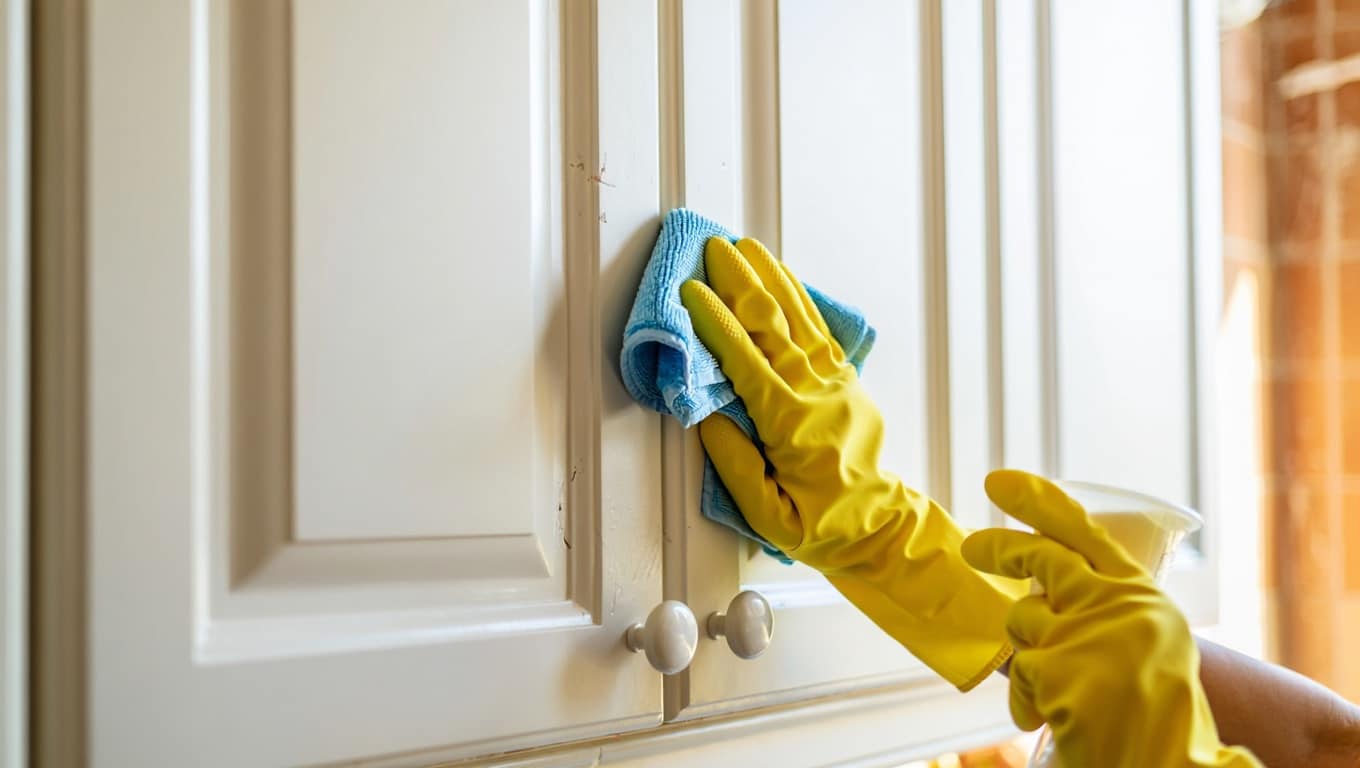
Begin with the cabinet doors. Start wiping gently with smooth, circular motions.
Work your way around each door, making sure to cover the edges and corners where dust and grime can collect.
Avoid scrubbing too hard, as it can scratch or wear down the paint.
Focus on one door at a time to avoid the cleaning solution drying before you wipe it off.
Step 4: Clean the Shelves

For shelves inside the cabinets, use the same damp cloth to wipe them down. If there are any stains or food spills, gently apply a little more pressure to clean those areas.
Be careful not to get too much water inside the cabinets, especially if they have wooden shelves.
Use the damp cloth to wipe off the shelves and any other smaller surfaces inside.
Step 5: Wipe the Handles

Don’t forget the handles or knobs! They can get just as dirty as the cabinet doors.
Use the damp cloth to wipe down the handles gently. If they are made of wood, treat them the same as the doors.
If they are made of metal, you may need to add a little extra soap to clean off any grease or fingerprints.
Step 6: Rinse the Cloth
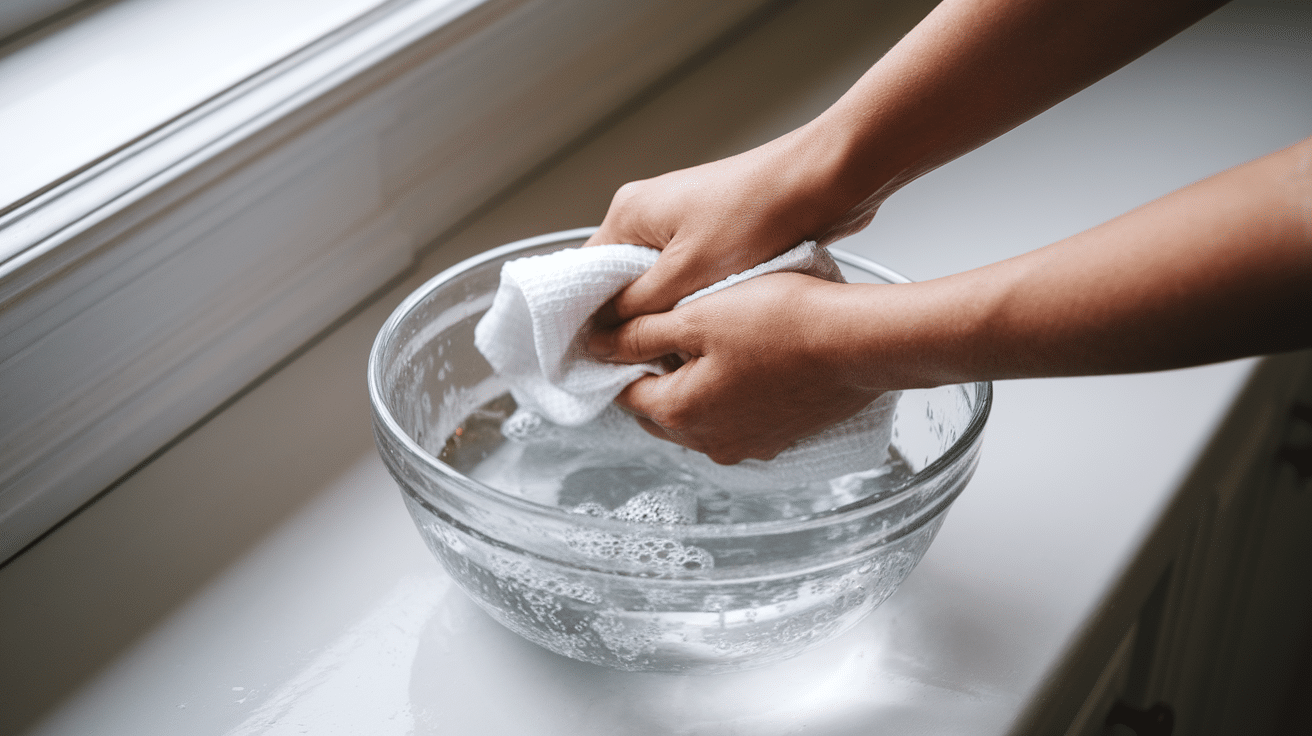
After cleaning a section, rinse your cloth in clean water and wring it out to remove any soap or dirt.
This helps ensure you are not spreading dirt back onto the surfaces.
Continue cleaning in small sections, rinsing the cloth as needed.
It helps keep the cleaning process fresh.
Dealing with Stubborn Stains
Even with regular cleaning, some stains can be tougher to remove. Here’s how to handle them without damaging the paint:
- Sticky Spots: Wipe gently with a soft cloth dampened in warm soapy water. If needed, use a vinegar-water mix to loosen the residue.
- Greasy Marks: Clean with dish soap and warm water using circular motions. For extra strength, apply a mild baking soda paste and wipe clean.
- Tough Stains: Spray a mild all-purpose cleaner safe for painted surfaces, let it sit briefly, then wipe away with a clean cloth. Always spot-test first.
- Water Rings/Spills: Use a slightly damp cloth with a vinegar-water solution to lift watermarks, then dry immediately.
- Dust Build-Up: For cabinets that look dull from dust, use a microfiber cloth slightly dampened with water to restore shine.
With these gentle methods, you can tackle even the toughest stains while keeping your painted cabinets looking fresh and damage-free.
Drying and Polishing
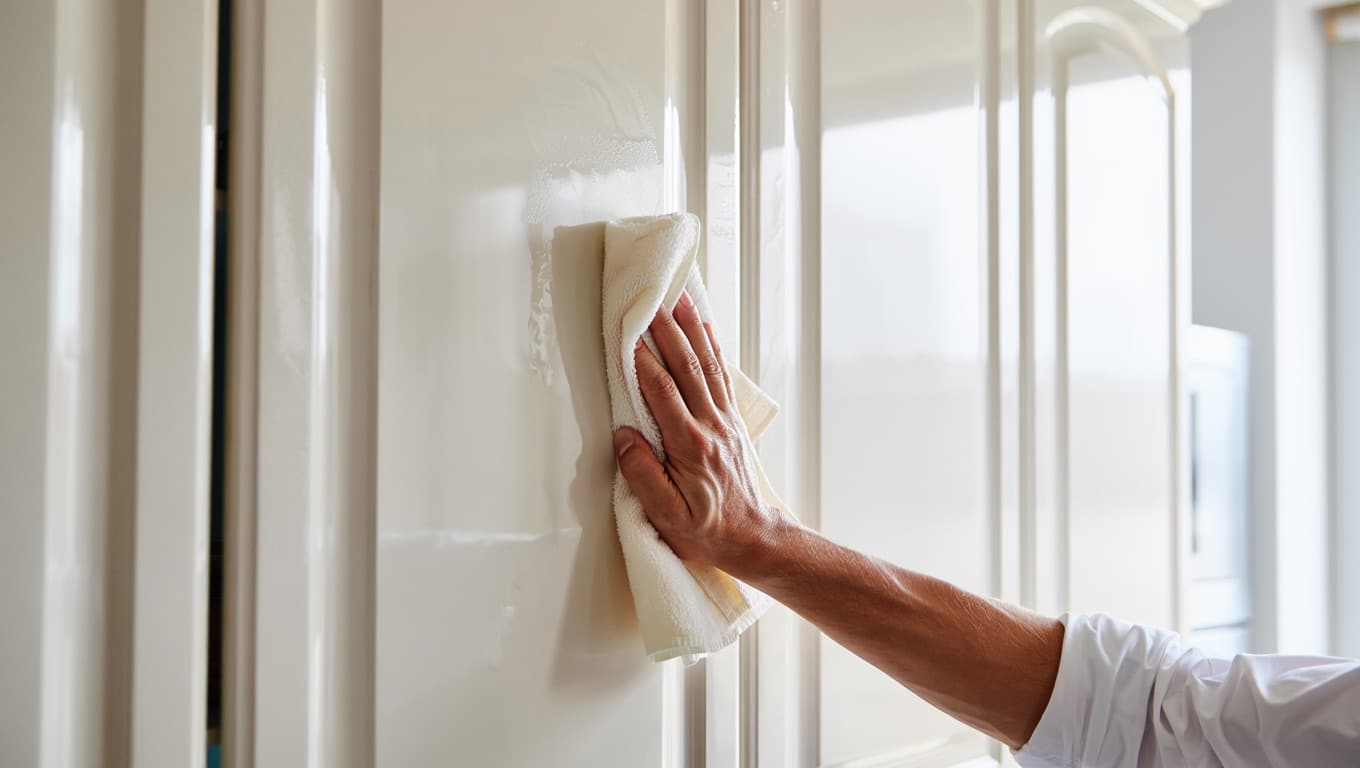
Once you have finished cleaning your cabinets, it is very important to dry and polish them so they can stay looking nice and fresh.
After wiping them down, use a clean and soft towel to gently dry the doors, shelves, and handles, making sure no water is left behind.
Leaving water on the surface can slowly damage the paint, so always pay extra attention to corners and edges where moisture can hide.
When everything is completely dry, you can bring back the shine by using a furniture polish that is safe for painted cabinets.
Put a small amount of polish on a clean cloth and rub it in gentle circles without using too much product.
If you prefer a natural option, a tiny bit of olive oil on a soft cloth can also create a simple, fresh shine.
Final Notes
Painted cabinets can make any room feel bright and welcoming, but only if they are cared for with patience and the right cleaning habits.
Taking a little time to handle them gently will help the paint last longer and keep the surface looking fresh and smooth.
With small efforts, you can enjoy cabinets that remain strong, clean, and beautiful for years without losing their shine or color.
Do you have a special trick for keeping painted cabinets looking their best? Tell us, share with us in the comments below.
Frequently Asked Questions (FAQs)
Is It Safe to Use a Sponge on Painted Cabinets?
Yes, but make sure it is soft and non-abrasive to prevent scratches.
How Often Should I Clean My Painted Cabinets?
Clean your cabinets once a month or whenever they look dirty.
Can I Use Harsh Chemicals to Clean Painted Cabinets?
No, harsh chemicals can damage the paint, so always choose mild cleaners.

